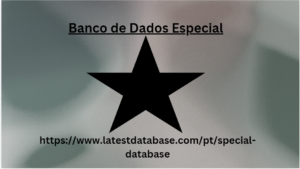You probably don’t think of going to the dentist as an exercise in mass customization, but technically. It is. Many dental items such as bridges. Dentures and mouth guards are made specifically for the patient, customized to the size, shape and perhaps even color of each mouth. When so many other items in daily life are simply mass produced identically at scale. How has dentistry sustained this exceptionally personalized experience?
The Digital Dentistry Alternative
Through manual labor, skill and analog processes, it turns out. These techniques have worked for decades. But pose trade-offs. They require hours of work, which translates to wait time for both doctor and patient. And may subject the patient to discomfort during the process.
Um banco de dados especial é um banco de dados Banco de Dados Especial criado para uma finalidade específica ou para armazenar e gerir um tipo específico de dados, que é utilizado para atingir uma tarefa ou objetivo específico. As bases de dados especializadas são criadas para atender a um objetivo específico
We dental patients have been willing to wait and suffer in order to receive these bespoke items, since there has been no other way.
But what if dentistry could be faster? What if it could be more precise? What if it could offer a more comfortable patient experience?
More Than Models 3D Printing into Digital Dentistry Workflow
This is the stage of dentistry we are entering right now, says Sarah Wells. Wells is the digital technology specialist at Spectrum Dental and Prosthodontics, as well as the COO at Spectrum Dental Printing. This second business is a dental lab adjacent to Spectrum Dental’s regular practice that is dedicated to 3D printing dental models and removable devices such as occlusal guards, temporary dentures and surgical guides.
Using a digital dentistry workflow enabled by 3D scanning technology as well as her lab’s five 3D printers, Spectrum Dental is improving dental care for its own patients and now those at other practices, too. To understand what a new, digital dentistry process might mean, it’s helpful to look at the conventional way of doing things. Consider dental models. Typically cast from dental stone, these models are positive reproductions of a patient’s teeth and/or gums that serve as the basis for developing implants like bridges as well as removable devices such as dentures and occlusal guards, mouth guards worn at night to prevent tooth grinding.
From Dental Lab to Test Swab Manufacturer 3D Printing into Digital Dentistry Workflow
The conventional process 5 лучших альтернатив HubSpot в 2024 году for producing dental models looks like this: The doctor places a tray filled with putty-like alginate in the patient’s mouth to obtain an impression of the teeth and gums. The material has to be allowed to harden while in the mouth. Which takes several minutes and can be uncomfortable for the patient. The impression is cleaned and trimmed. Once the impression is made. A technician mixes and pours the stone into the cavity to make the final model.
An Analog Path to Customization
Even if all goes smoothly, the final model still may not be completely agb directory accurate. The alginate used to capture the impression can cause teeth or tissue to move out of position. Or even pull out teeth if they are loose. Bubbles and voids in the stone mixture can negatively impact the end result as well. That end result is often not just the model itself .Tecause these models are also the starting point for developing dental devices. If the patient requires dentures. For instance. The technician applies wax to the model and carves it into the desired shape.
Then, the waxed model is placed into a flask and surrounded with plaster. The wax is melted away, and the finished mold can be filled with resin to create the dentures. For occlusal guards, the stone model actually becomes a thermoform mold. A thick sheet of acrylic is formed over The plaster then cured, trimmed and polished to form the guard. In both cases. The model serves as sacrificial tooling and is lost once the process is complete. Without a good model to work from. The technician may end up developing a device that won’t work for the patient and the process will need to start over with impressions.
The Digital Dentistry Alternative
The 3D printing lab is just part of Spectrum’s digital dentistry workflow. Which in fact started with 3D imaging. The practice has a desktop 3D scanner that can capture data from models made with traditional impressions, but also uses intraoral scanners that make it possible to move away from taking impressions altogether. Once the 3D data is acquired through one of these scanning methods. A dental lab can use it to create G code for a dental CNC mill or an STL file for a 3D printer.
Dr. Bradley Purcell, the owner and practicing prosthodontist of Spectrum Dental as well as president And CEO of the 3D printing lab business. Teaches continuing education classes for dentists on scanning And the digital workflowSpectrum is currently equipped with software and handheld intraoral Trios scanners from Each scanner is about the size of an electric toothbrush.. And Allows staff to capture digital three-dimensional images of patients’ mouths by simply moving the scanner’s camera along the teeth and jaw. The scan is instantly displayed on a computer monitor with Any missing areas highlighted so the user can check that all needed data has been captured.


